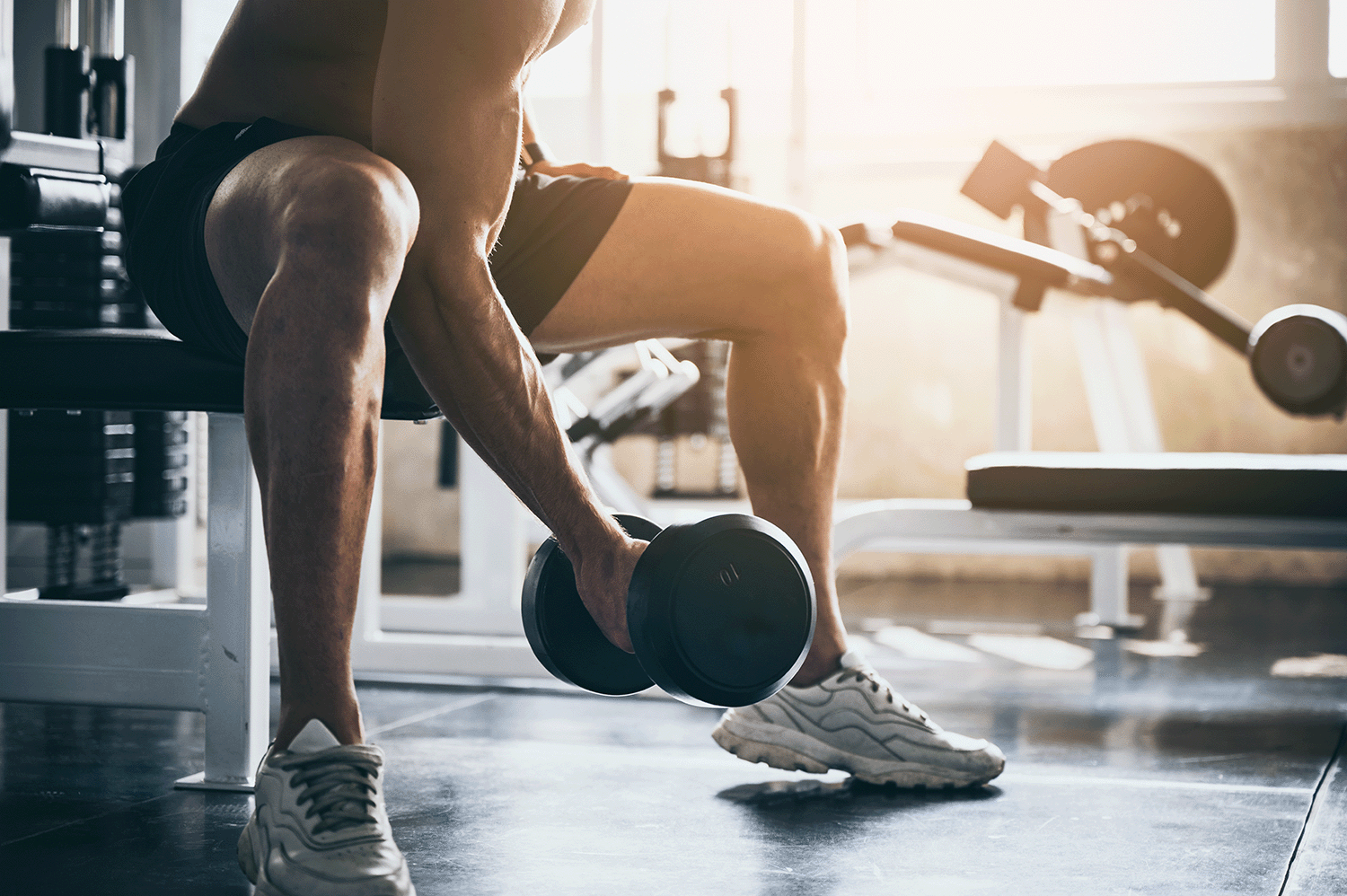In resistance training research, it is well-established that muscle growth tends to occur more rapidly during the early stages of a training program. Over time, as individuals become more well-trained, the rate of muscle gain naturally begins to slow (1). To prevent stagnation and continue progressing, it is often recommended that gym goers incorporate more advanced training techniques or adjust training variables strategically (2).
For instance, research suggests that resistance-trained individuals may benefit from periodically increasing their weekly set volumes, either to target lagging muscle groups, or to maximize overall hypertrophic adaptations (2). Evidence supporting this comes from a 2022 study by Scarpelli and colleagues (3), which found that tailoring resistance training volume—specifically by increasing weekly sets by 20% for the quadriceps—resulted in superior muscle growth compared to a fixed volume of 22 weekly sets. Over an 8-week period of unilateral leg exercises, the individualized program achieved a 9.9% increase in quadriceps muscle size, compared to a 6.2% increase with the standardized volume. These findings suggest that progressive volume increases may enhance hypertrophic adaptations.
Interestingly, however, other studies on the topic, such as those by Ostrowski et al. (4) and Aube et al. (5), reported no significant differences in muscle growth or strength, when baseline training volumes were taken into account. Both studies observed inconsistent results when adjusting training volumes relative to baseline. The inconsistent results from these studies underscore the uncertainty regarding whether increasing training volume relative to baseline effectively enhances muscle growth or strength in trained individuals. These variations are particularly evident when considering differences in study design and the specific muscle groups tested. Additionally, research on adjusting baseline training volume for muscles other than the quadriceps and for strength improvements is still quite limited.
So let’s take a look at what they did? Hear my thoughts in this video:
The group of researchers here at the University of South Florida, recruited 42 recreationally trained men and women between the ages 18-35 to participate in this study. The participants had to have trained their biceps for at least 6 months prior to enrolling in the study. Participants were randomly assigned to have one arm continue with the same number of sets they were accustomed to, directly targeting the biceps each session, while the other arm performed an additional 2 sets per session. So for example, if a participant had previously been performing 4 sets of bicep curls per session, one arm simply continued performing 4 sets, while the opposite arm performed 6 sets.
All sets of exercise were taken to task failure, or the point at which the participants could no longer perform an additional repetition with good form, focusing within an 8-12 rep range. All sets were performed using the unilateral standing dumbbell curl exercise, and the participants trained 2x per week for a total of 12 weeks, 8 of which were supervised by the research team and 4 occurred at the participants gym of choice. The researchers measured bicep muscle thickness across multiple sites, including the 50, 60, 70% sites, and 1RM strength was also measured pre- and post-intervention.
So what did they find?
After the 12-week training intervention, the researchers observed a significant increase in muscle size at each site of the biceps, with muscle thickness increasing by approximately 0.14 – 0.16 cm. Interestingly, there were no significant differences observed between the two training conditions, meaning, both conditions increased muscle size to a similar magnitude after the 12 weeks. Similarly, for muscle strength adaptations, researchers observed no significant differences between the two conditions. Both conditions increased their 1RM strength by about 2kg after the 12-week training period.
So what does this mean for me?
While some data suggests that periodically increasing set volume can enhance muscle growth, the current study found no advantage to prescribing additional sets compared to sticking with an individual’s baseline training volume. Instead, the extra 2 sets per session (or 4 weekly sets) seemed redundant for stimulating further muscle growth.
In other words, it seems as though the participants’ baseline training volume was already a sufficient stimulus to maximize muscle growth adaptations in these previously trained lifters.
It is also possible that the additional sets could have been more effective if they were applied to a different exercise targeting the biceps, for example, preacher curls, rather than adding more sets of the same exercise which was the standing dumbbell curl. Another option which might have helped stimulate muscle growth more effectively could be distributing the additional sets across three training sessions instead of two, however, this could not be answered with the current study design.
So what are my practical takeaways from this paper:
In summary, this study found that increasing the number of sets beyond baseline did not lead to greater muscle growth in recreationally trained individuals, compared to sticking with the baseline training volume. Both training conditions were similarly effective in promoting significant increases in muscle thickness and 1RM strength of the biceps. In the context of training to maximize muscle growth, there are a multitude of ways that we can adjust our training in order to avoid growth plateaus. It seems that simply adding more sets of the same exercise, while an easy adjustment to make, might not be the most effective change if you’re already performing enough sets for a given muscle group. Instead, consider progressing through other strategies, like increasing the load or weight you lift, adding additional training sessions, or including different exercises that target the muscle in a new way.
References
- Counts BR, Buckner SL, Mouser JG, Dankel SJ, Jessee MB, Mattocks KT, Loenneke JP. Muscle growth: To infinity and beyond? Muscle & nerve. 2017;56(6):1022-30.
- Schoenfeld B, Fisher J, Grgic J, Haun C, Helms E, Phillips S, et al. Resistance training recommendations to maximize muscle hypertrophy in an athletic population: Position stand of the IUSCA. International Journal of Strength and Conditioning. 2021;1(1).
- Scarpelli MC, Nóbrega SR, Santanielo N, Alvarez IF, Otoboni GB, Ugrinowitsch C, Libardi CA. Muscle hypertrophy response is affected by previous resistance training volume in trained individuals. Journal of Strength and Conditioning Research. 2022;36(4):1153-7.
- Ostrowski KJ, Wilson GJ, Weatherby R, Murphy PW, Lyttle AD. The effect of weight training volume on hormonal output and muscular size and function. Journal of strength and Conditioning Research. 1997;11:148-54.
- Aube D, Wadhi T, Rauch J, Anand A, Barakat C, Pearson J, et al. Progressive resistance training volume: Effects on muscle thickness, mass, and strength adaptations in resistance-trained individuals. Journal of Strength and Conditioning Research. 2022;36(3):600-7.

Holly T. Baxter is an Australian Dietitian with over 13 years of experience in health and fitness. She holds a degree in Food Science and Nutrition and a Master of Dietetics from Deakin University. A former professional physique athlete, Holly has two World Championship titles. Her latest project, BiaBody, is dedicated to women’s health and fitness. As an APD Dietitian and Online Physique Coach, she focuses on evidence-based health education and empowering women through fitness.

